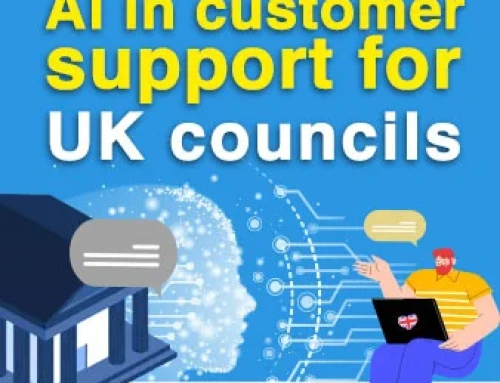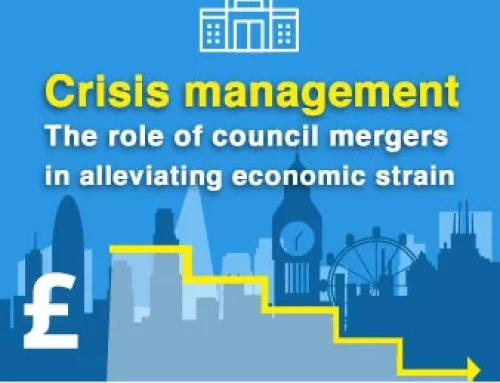How Chatbots can help local authorities provide better services?
An investment for the future to reduce the cost of faster problem-solving.
Local authorities are now using chatbots as part of their customer service. It is because they can provide local residents with quick and easy access to the necessary services, saving time and money for both parties. Virtual assistants for local authorities are also popular because they are easier to use than phone calls or emails. They can help local authorities improve accessibility for people with disabilities and reduce costs by making communication easier for everyone involved in communicating with the government.
The bottom line of Chatbots’ operations
Chatbots are known as conversational user interfaces (CUI). They are often used in many applications, including customer service and marketing.
Chatbots can be divided into complete artificial intelligence bots and semi-autonomous bots. The former type conducts complex conversations with humans and answers questions more accurately than its semi-autonomous counterpart. Chatbots understand the context within longer strings of dialogue by linking short sentences to an extended discussion. However, these more advanced AI chatbots require extensive training before performing their assigned tasks effectively.
Semi-autonomous chatbots rely on limited preprogrammed responses to specific questions or commands given by a human user; they are incapable of carrying out complex conversations without assistance from a qualified developer who understands the underlying purpose behind each command word or phrase in your bot’s vocabulary file (a list containing all available commands).
Semi-autonomous chatbots can help perform simple tasks, such as answering basic questions and providing general information about your company. For example, suppose you have a customer service chatbot on your website that allows visitors to submit inquiries via text message or email without creating an account. In that case, this bot could help answer common questions about products or services. It could also support new customers who need assistance registering their accounts on your site.
Things Chatbots can do for local authorities
While there are some concerns about the potential for job losses, many authorities believe that chatbots can help them save money and improve services. In addition, chatbots can help to free up staff time by taking on simple tasks such as answering frequently asked questions.
So, how can chatbots help local government?
- Chatbots can provide information.
- Chatbots can answer questions.
- Chatbots can make payments.
- Chatbots can report issues or concerns and even make appointments for you to see an employee if you require it.
AI development services can include reporting an abandoned vehicle or requesting a collection service for rubbish bins (in the United Kingdom).
The future of customer service via Chatbots for local authorities
Chatbots offer a range of benefits that can be tailored specifically to local authorities’ needs:
- They’re more accessible than ever, with many chatbots available 24/7 and on mobile phones and desktop computers.
- They’re efficient and cost-effective, requiring limited resources from staff members and offering an automated solution for frequently asked questions (FAQs) or requests for information (RFI).
- They’re responsive thanks to artificial intelligence that learns from past interactions and applies this knowledge when responding to future customer conversations.
- Chatbots can also personalize their responses by learning about individual users through analysis of their language patterns during previous chats or through additional data provided by users themselves – for example, via social media profiles such as Facebook – thus enabling them to tailor their replies more effectively based on who they’re talking.
The main benefit of a chatbot is that it can reduce the cost of providing services to citizens. It is possible because the chatbot can handle repetitive tasks and free up staff time for more complex jobs. In addition, the bot’s conversation with citizens will also be automated, so there’s no need to hire an operator or pay anyone to train them to talk with customers.
It can make it easier for local authorities to provide better customer service at a lower cost than traditional methods such as call centres, which typically require human operators and are expensive in terms of investment costs and running costs (for example, wages).
There are a number of different platforms that authorities can use to develop chatbots, including open-source options like Rasa NLU. Local authorities should consider the needs of their community when choosing a chatbot platform, as well as the skills of their team.
How Chatbots can help local authorities provide better services
Chatbots can help local authorities provide better services through:
- Delivering information more effectively. Local authorities often have a wealth of knowledge that they offer the public, but it can be challenging to make it accessible. With a chatbot, you can easily make that information available to everyone who wants it, without hiring additional staff members or developing complicated apps.
- Helping people find answers quickly and efficiently. Chatbots can answer common questions about your service and allow users to submit new requests in just a couple of clicks – all without requiring human intervention from your staff members (or additional costs for salaries).
The development of chatbots and virtual assistants for use by local authorities is still in its early stages, but it is an area that is definitely worth keeping an eye on. As technology continues to evolve and become more refined, it is likely that we will see more and more amazing ways in which these tools can be used to improve the way that local government works.
Local authorities are facing many challenges, but there are ways for them to improve and help their communities.
With the use of chatbots, they can provide better services, making life easier for everyone involved. It’s time we moved away from traditional methods and embraced the future!








